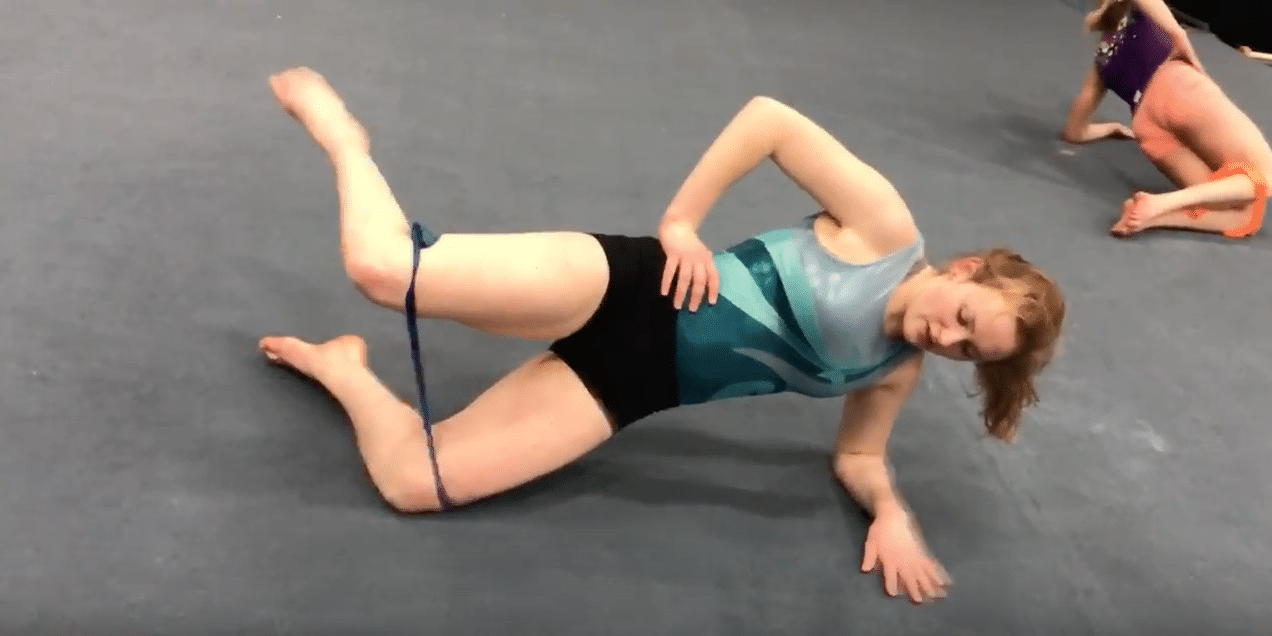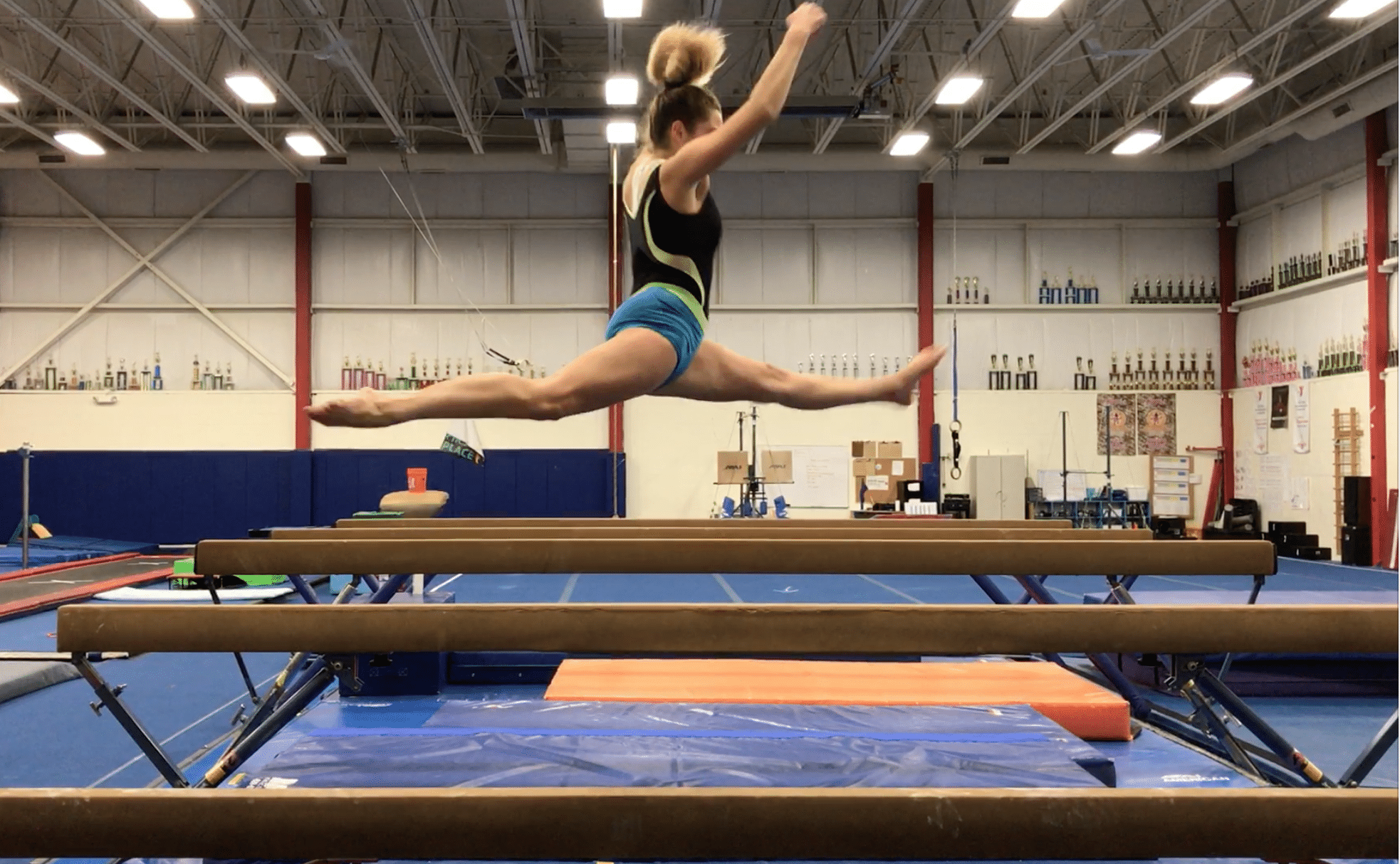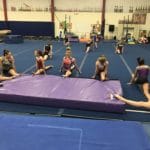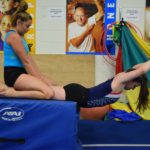Sideplank Clam/Reverse Clam for Hip Strength – Video Quick Tip
I’m a huge fan of using doublets or triplets in our strength program to sneak in some much needed, but often overlooked, hip exercises for the smaller stabilizer muscles. They are so important for both injury prevention and optimal hip performance during gymnastics skills. As a busy coach, I know all too well hard it can be to find time for everything. This side plank clamshell/reverse clamshell exercise is one of my “go to” exercises to add into the active rest slot during strength work.
This exercise gets a lot done besides just the hip work. It’s great for
- Lateral core work, biasing anti side bending but still focusing on midline bracing and control
- Weight bearing shoulder dynamic stability (down arm holding body up)
- Works active external and internal hip rotation, which helps bias different glute medius and piriformis on the top leg. This strength helps theoretically enhance leaps, jumps, running, and more
- Works glute medius and minumus strength on the down leg (high EMG activity reported in this exercise). This aspect hypothetically transfers well to weight bearing power jumping skills, ideal sprinting mechanics, landings, and good hip control during tumbling
To perform this exercise, the gymnast will first lay on their side with an appropriately challenging looped elastic band (latex free where needed) just above their knees. When the gymnast pushes up into a bent-knee plank, the hips should be fully open and flat, and the down elbow should be directly under the shoulder, with no twisting of the body. From this starting the position, the athlete will lift the top knee while the ankles stay together. Once the top knee is up in the air, they then will rotate the top ankle away from the bottom, but while keeping the knee still. The helps to work multiple aspects of the glutes and hip rotators, both for the bottom and top leg.
Table of Contents
Want to Exactly How I Approach Gymnastics Strength and Conditioning?
To help readers learn more about strength and conditioning principles, as well as injury prevention techniques, I have put together a free “Gymnastics Pre-Hab Guide” in PDF form. It outlines all of my current thoughts on gymnastics flexibility, hip and shoulder care for male and female gymnasts, and step by step exercise video/worksheet guides to use in training. You can download it here,
Download SHIFT's Free Gymnastics Pre-Hab Guide
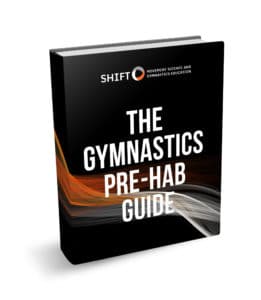
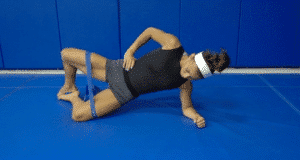
Daily soft tissue and activation exercises
Specific 2x/week Circuits for Male and Female Gymnasts
Descriptions, Exercise Videos, and Downloadable Checklists

This exercise looks simple, but it is deceivingly hard when properly executed. If it is too hard for athletes, they can use no band and just focus on smooth technique. If it is too easy, the band resistance can increase, a tempo count can be used to slowly control the lower, or hard exercises can be introduced with mroe load. After playing around and checking the technique without a band, try adding a band and go for a few sets of 8-12 reps depending on the athlete’s ability. Enjoy!
– Dave Tilley DPT, SCS

